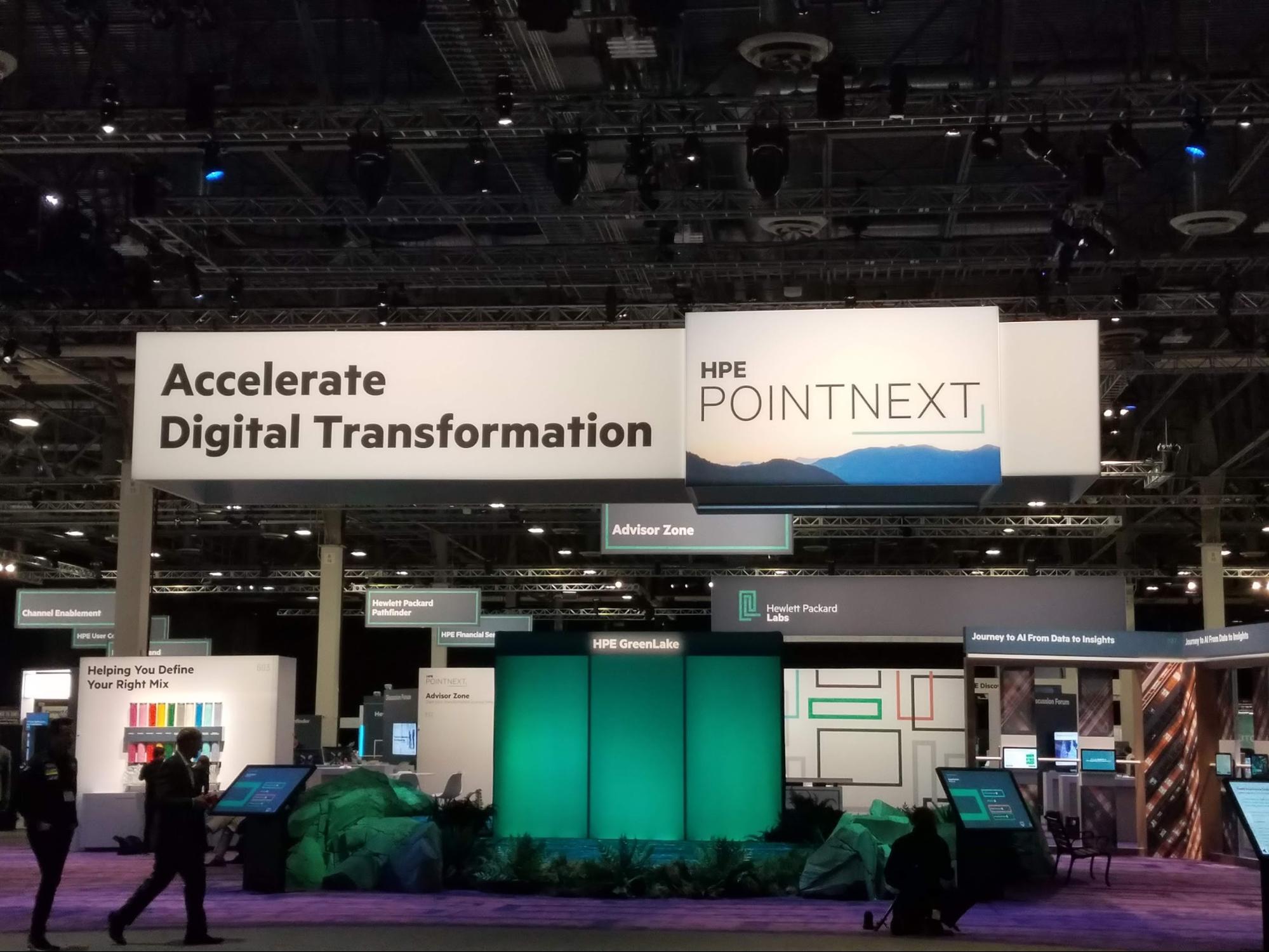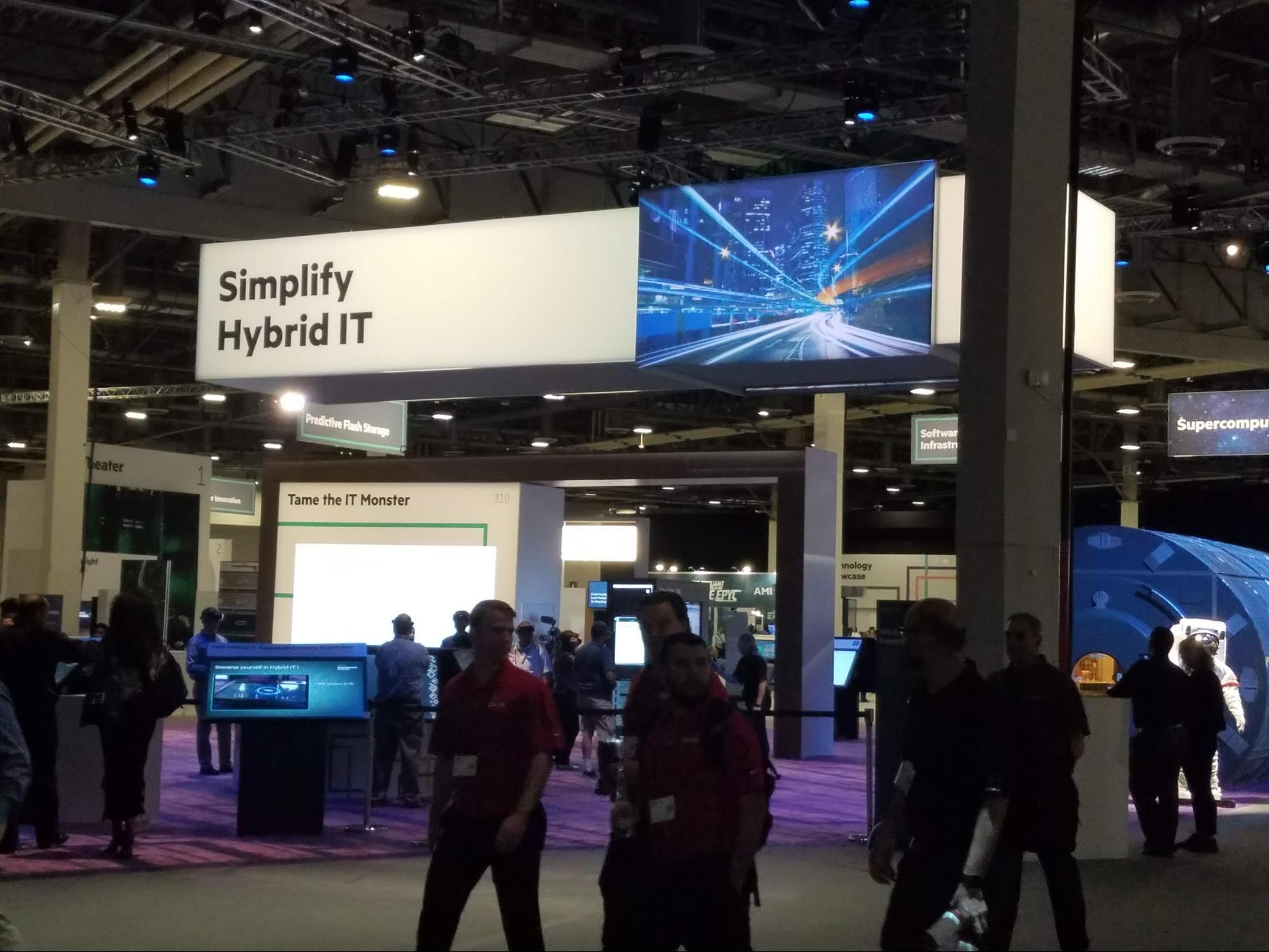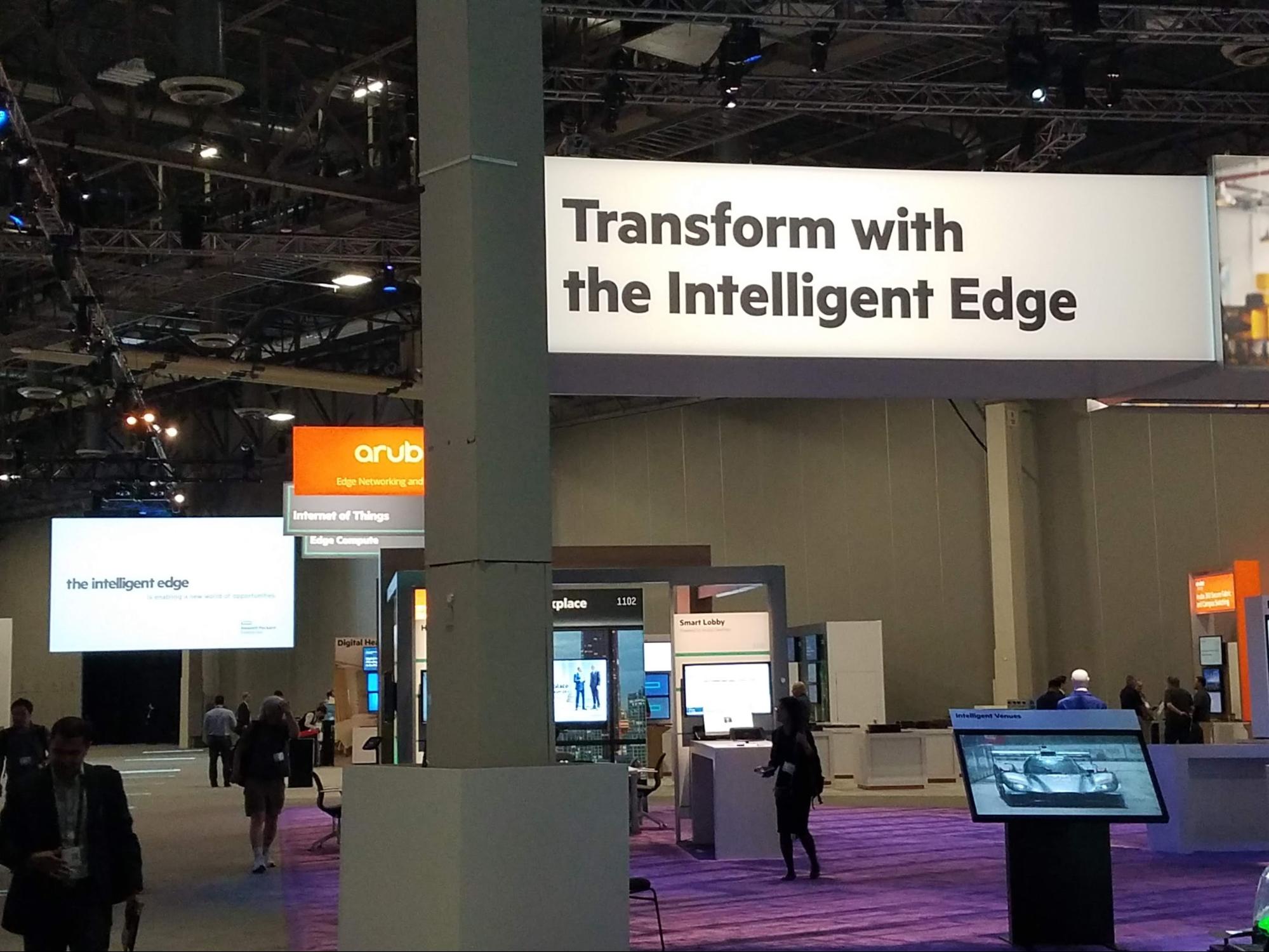4 Key Takeaways from HPE Discover 2018
I had the pleasure of speaking at the recent HPE Discover conference, that took place last week in Las Vegas, and saw thousands of attendees – ranging from Fortune 500 companies to Cloud Service Providers to Partners.
First off, it was fascinating to see HPE, one of ‘original’ tech companies, turn on a dime to transform themselves into a cutting-edge technology player. Now, let me share 4 additional takeaways and key trends I spotted at the event:
1Digital Transformation for Enterprise IT is Here and Now

First and foremost, the conference underscored the fact that digital transformation – in particular for Enterprise IT – is happening NOW.. As large enterprises need to stay competitive in today’s market, they are investing more and more in modernizing and “DevOps-ifying” their IT infrastructure and their applications to enable faster time to market and increase the speed and quality of software releases.
HPE has been focusing on enabling these enterprise customers to create a business differentiation by modernizing their IT approach.
Related to investing in new tools and technologies, another area of discussion was around enabling the cultural transformation that is a prerequisite to any successful digital transformation. How to create teams and an organizational culture that fosters innovation, experimentation, and disruption-from-within- to enable even complex, large enterprises, to be nimble and competitive.
In that respect, it was also heartening to see a focus on Open Source as a key enabler to enterprise digital transformation – both from a technology standpoint, as well as from the standpoint of the underlying culture and the values that Open Source embodies.
Virtually every major advance in consumer technology, mobile business models, data center architectures, product development methodologies and release practices over the last ten years has had its origins in open source.
2Hybrid IT Needs a Simplified Approach

The second takeaway was around the emphasis placed on Hybrid IT approaches as a way of driving business transformation. Fortune 500 enterprises across a wide range of industries have just begun embarking on a decade-long journey to moving to the cloud, to allow for more modern architectures and operations, faster releases, easier scaling, cost reduction and better manageability.
On this journey, large enterprises with a slew of legacy/brownfield applications, have begun implementing a range of hybrid cloud architectures as a best practice to enable the move of some workloads to the cloud. Avoiding lock-in to specific IaaS providers or cloud stack and investing in a private cloud strategy are emerging as key patterns for reducing risk, and accelerating their time to value, while capitalizing on their exiting IT infrastructure investment and running different workloads in the environments where it makes the most sense from a cost or performance perspective – either on-premises or in the cloud.
The public cloud is rightly being viewed as just one option and not a panacea. The biggest pain points for enterprises today running a hybrid cloud is OpEx maintenance costs and the lack of business agility.
3The Intelligent Edge is the Future of Computing

There was a heavy focus around Intelligent Edge technologies backed by announcement of major investments. HPE itself announced plans to invest $4 billion in Intelligent Edge technologies and services over the next four years. Sophisticated applications at the Edge is a trend we are observing across Platform9’s customer base as well, particularly in industries such as Technology, Retail, Transportation and Manufacturing, where applications are often moving away from a datacenter or colo to directly interacting with customers and a range of mobile devices and sensors in the physical world.
According to Gartner, by 2022, 75% of enterprise-generated data will be created and processed outside of the traditional, centralized data center. In his keynote, HPE’s CEO pointed out that millions of distributed clouds will be processing this data, to benefit both enterprises and the end-customers’ user experience.. Due to this evolution, hybrid clouds are going to become even more fragmented, federated, and more complex, in the years to come.
While there are many examples of ‘Edges’, these applications typically interact with end users with the goal of offering customers a seamless and personalized experience. Leading Edge applications are also continuously learning in real-time with AI and machine learning data models.
Containers are becoming the chosen technology for Edge applications, with Container Orchestration solutions, such as the open source Kubernetes, are becoming the chosen platform to host these applications.
Memory-driven computing was also highlighted at the event. HPE’s vision of composable architecture running hyper-fast memory means that customer and analytical data will be co-located, driving real time business architectures from the edge endpoint to the datacenter, where such heavy computation and storage are possible.
IT was thrilling to see Aruba – one of our key customer – featured prominently at the conference, and rightly so. Aruba now serves as the nerve center for all of HPE’s wired and wireless investments. The Moonshine and EdgeLine series of products are market leaders helping enterprises to process and analyze data in harsh environments that are severely compute-constrained.
4Not Your Dad’s Datacenter: The Future IT Landscape is Hybrid Through and Through
The meta-theme for this great conference was that the future IT landscape is hybrid, through and through. Enterprises will need to support an increasingly hybrid state of affairs – as we move from legacy applications, to modern architectures and new technologies, requiring different IT consumption modes.
Enterprises have to support many different types of applications and architectures (legacy applications, mainframe, monolithic, cloud-native apps, microservices, serverless, and more), each requiring their own technology stack and different types of infrastructure – which can be running on premises, private/public clouds, containers environments, etc. Each environment, in turn, is being built and maintained in a fundamentally different way (i.e. -the way enterprises manage their own on-premises infrastructure, like VMware, is vastly different from the way they consume their infrastructure on AWS or Containers environments.)
This complex, hyper-hybrid state has implications on each function of modern IT management: legacy networking or storage transforming to being software-defined; monolithic applications being decomposed to microservices running on containers; manual deployment and operations replaced by end-to-end automation from provisioning all the way to Production ops; proprietary OS/hardware on-premises data center and lengthy processes between IT and Dev teams are transforming to self-service experience that resembles the public cloud, even on-prem; moving from purely on-premises to hybrid cloud and multi cloud data centers; and much, much more.
Every keynote speaker included the transformative effect of the hybrid cloud in their talks, and virtually every one of HPE’s product lines has a story around the enabling cloud-native development.
Platform9’s Talk at HPE Discover
A range of disruptive startups were featured in the HPE Pathfinder zone, Platform9 among them. This area got a lot of traffic from attendees looking to modernize their IT infrastructure, and our session “From Hybrid IT to DevOps to NoOps: Adopting cloud-native with Kubernetes and FaaS” got incredible responses from a packed room, who was excited to hear about our hybrid cloud architecture and capabilities.
A key theme of my talk was the adoption of cloud-native technologies as a critical component for enterprise IT leaders to help their businesses succeed. However, Cloud-native platforms force IT to support higher levels of automation across the application lifecycle and operations. I was happy to share war stories from the field around cloud maturity models as well as highlighting a spectrum of technology investments ranging from hybrid cloud management to container orchestration to serverless computing.
Wrap-up
This quote from HPE’s CEO Anthony Neri summed up the event for me: “We believe the enterprise of the future will be edge-centric, multi-cloud and data driven”.
We at Platform9 are in violent agreement as we are seeing this story played out in our daily conversations with customers. While it is important to solve business challenges faced today, it was gratifying to see HPE with a firm focus on the possibilities for tomorrow.
- Beyond Kubernetes Operations: Discover Platform9’s Always-On Assurance™ - November 29, 2023
- Platform9 Introduces Elastic Machine Pool (EMP) at KubeCon 2023 to Optimize Costs on AWS EKS - November 15, 2023
- KubeCon 2023 Through Platform9’s Lens: Key Takeaways and Innovative Demos - November 14, 2023